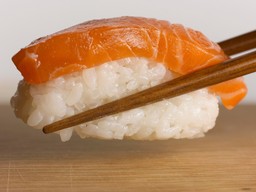There is much to be said about grains, but this week we will start with talking about rice. Rice is a staple for a large part of the worlds population. It is important to keep variety in the diet. Since there are so many different types of rice, don’t get stuck on one kind!
For rice as an alternative to some other grains, it is important to note that there are some major differences. We will split these into three major categories which are white rice, brown rice, and others. There are many different things that make each one unique both in taste and health. Always remember that variety is the most important part of any diet!

White rice is one of the most popular types for people to consume. With the many different varieties, you can find a type you like, and incorporate it into your diet. White rice is brown rice without the outer bran. This does strip away some of the nutrition. Although white rice is not as nutritionally dense, it also has about half as much inorganic arsenic as brown rice does. White rice can also be easier for people to digest since the outer layer is not present. This makes white rice a more simple carb than brown rice, but this also results in it being higher on the glycemic index.
Rice tends to be categorized by the color and grain length. White rice comes in many different lengths from very short grains to long grains.

Short grain rice like that of sushi rice tends to have a more glutinous texture resulting in sticking together. This type of rice tends to dry out less quickly due to the denser texture. The taste is a little sweeter and less aromatic than other varieties. When picking a short grain rice, short grain rices that are from California tend to have a much lower arsenic content than other varieties.
Medium grain rice in between a short and long grain. Medium grains can become sticky, or they can be fluffed up. Medium grain gives you the best of both types and can be an ideal for use in multiple dish types.
Long grain rice is fluffier and does not have a sticky texture. These also have a variety of aromatics associated with them as well. Basmati rice that is from California, India, or Pakistan is shown to have much lower arsenic levels than other varieties as well. Jasmine rice is another long grain rice that has a nice aromatic component to it. Jasmine rice can cling to itself slightly, although it is not sticky.
As you can clearly see, there are tons of different types of white rice! This grain alternatives series will continue with more information about the other types of rice, and grains. Stay tuned!
For more information on rice, here are some links to help you do some research as well!
Whole Grain Council on Types of Rice
Share
FEB
2016

About the Author: